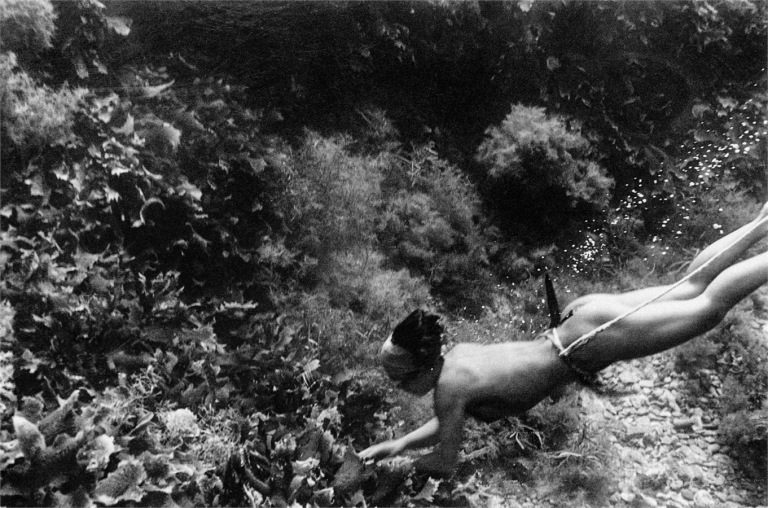
One of Japan’s most fascinating yet lesser-known traditions is that of the Amasan — literally “women of the sea.” For over a millennium, these divers have descended into the ocean with nothing but intuition, resilience, and breath. Relying on lung capacity, bodily knowledge, and remarkable endurance, they gather seaweed, sea cucumber, urchins, lobster — but most coveted of all, abalone.
The earliest references to the Ama appear in the Man’yōshū (c. 750 AD), Japan’s oldest surviving collection of poetry. Here, they are evoked as figures bound to the tides — women who carried both the burdens and offerings of the sea.
Italian photographer and ethnographer Fosco Maraini documented this tradition in his book The Island of the Fisherwomen, capturing not only their skill but their cultural significance. He observed Ama diving to depths of 30 meters without oxygen, surfacing with the isobue — a piercing whistling exhale, as haunting as it is necessary.
Anthropologists noted that women were believed to be more suited to this life: their resilience, independence, and even an additional layer of fat offered protection in the cold waters. But beyond biology, the Ama embody something elemental — a lineage of women whose intimacy with the sea borders on mythic.
Today, however, this practice faces decline. By 2017, over 70% of divers were between 50 and 80 years old. Globalization, modern fishing practices, and ecological changes have eroded the tradition. While villages work to preserve sustainable methods, the quality of seaweed has diminished, and younger generations often turn away from this arduous way of life.
The Ama thus stand at a threshold: both living archive and endangered tradition. Their dives remind us that cultural memory can be fragile, yet profoundly resilient — suspended, like breath itself, between loss and survival.
Words: Khumoetsile Seamogano
Visuals: The Island of the Fisherwomen, Fosco Maraini











